Search Images
Browse Content (p. 1361)

Image
Gilt-bronze Maitreya
A gilt-bronze statue of Maitreya (the coming Buddha). Three Kingdoms Period, c. 600 CE, Korea. (National Museum of Korea, Seoul, South Korea)
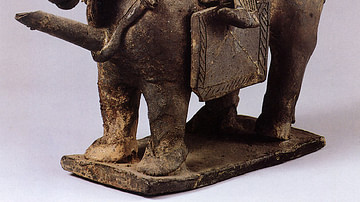
Image
Silla Ceramic Warrior
A ceramic ewer in the form of a warrior on horseback. 5-6th century CE, Silla Kingdom, Korea. (National Museum of Korea, Seoul, South Korea)
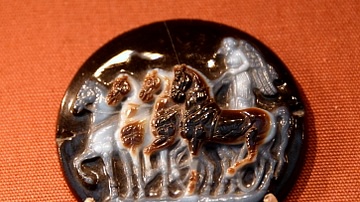
Image
Nike & Chariot Cameo
This sardonyx cameo depicts Nike (Victory). The winged goddess wears a long chiton and drives a 4-horse chariot. Skillful Roman cameo-carvers exploited the tonal contrast of some stones. This could be a simple 2-tone contrast or a more subtle...
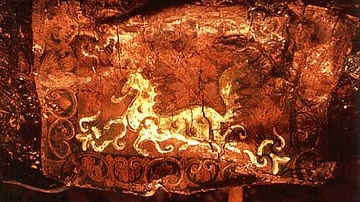
Image
Silla Horse Painting
A painting of a winged horse on a birch bark saddle flap. From the Heavenly Horse Tomb, Gyeongju, Korea. Silla, 5-6th century CE.
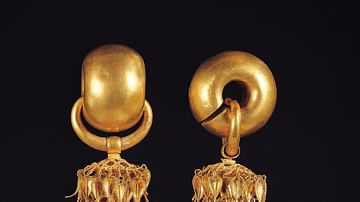
Image
Silla Gold Earrings, National Treasure 52
5-6th century CE gold earrings from the Silla Kingdom (57 BCE - 668 CE) of south-eastern Korea. From a tomb in the Gyeongju area. National Treasure No. 52. (National Museum of Korea, Seoul, South Korea)
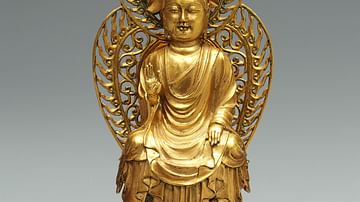
Image
Unified Silla Kingdom Gold Buddha
A gold Buddha statuette from the Unified Silla Kingdom (668-918 CE), Korea. From a stone pagoda at the Hwangbok-sa temple site, Gyeongju before 706 CE. Height 12.5 cm (National Museum of Korea, Seoul, South Korea)
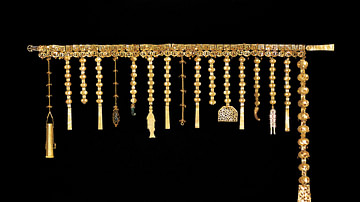
Image
Silla Gold Girdle
A c. 6th century CE gold girdle from the Silla kingdom of south-eastern Korea (57 BCE - 668 CE). From the Gold Crown Tomb, Gyeongju. National Treasure No. 88. (Gyeongju National Museum, South Korea)
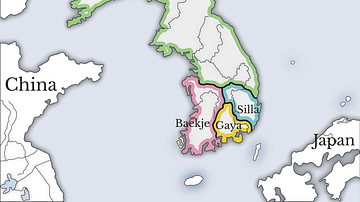
Image
Three Kingdoms of Korea Map
A map showing the three kingdoms (Goguryeo, Silla, and Baekje) and the Gaya confederation which ruled Korea between the 1st and 7th century CE.

Image
Silver Coin of Tissaphernes
Silver coin issued by Tissaphernes (c. 420-395 BCE) in Persia. The obverse depicts a satrap while the reverse shows a lyre with seven strings.

Image
Gilt-bronze Silla Maitreya
A gilt-bronze statue of a seated Maitreya (the future Buddha). Silla, early 7th century CE. (National Museum of Korea, Seoul, South Korea)